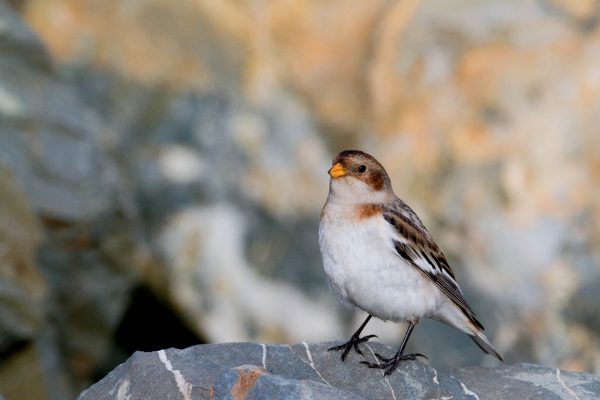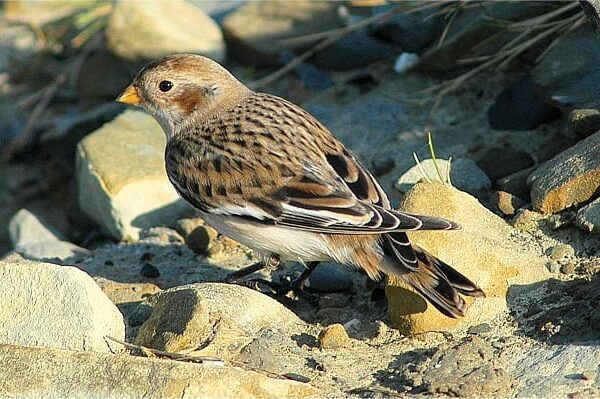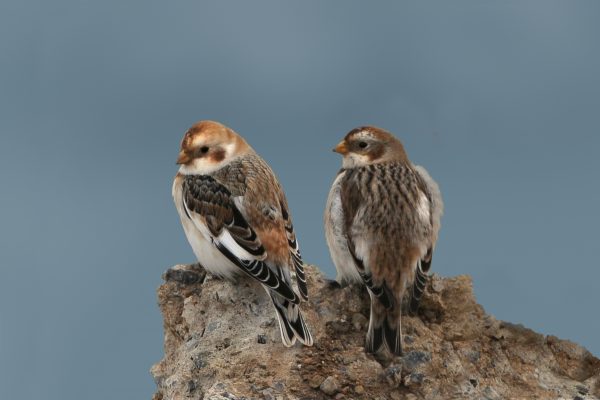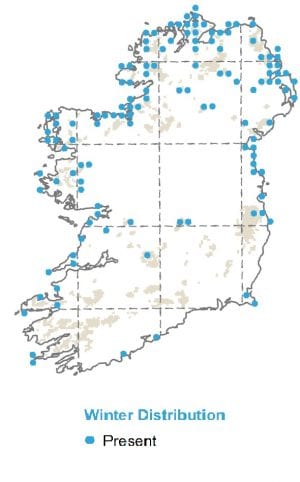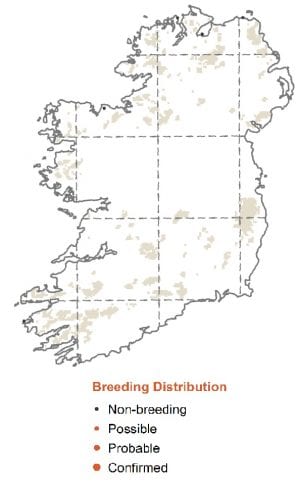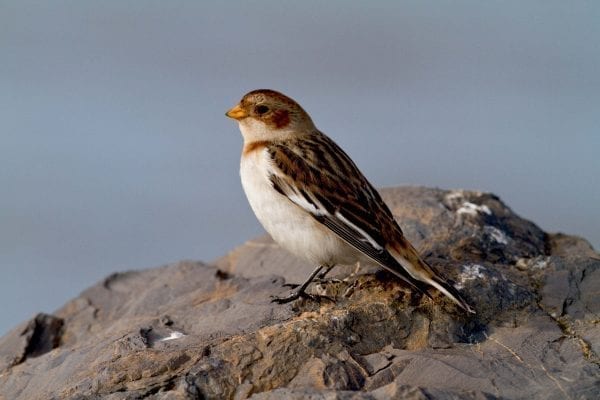
Snow Bunting
| Irish Name: | Gealóg shneachta |
| Scientific name: | Plectrophenax nivalis |
| Bird Family: | Buntings |
green
Conservation status
Conservation status
Status
Uncommon winter visitor from October to March.
Identification
A typical bunting in size and shape, being slightly larger than a Chaffinch. Has a number of distinctive plumages, making identification of males and females relatively straightforward. In all plumages, males have a much larger white wing-panel than females. Adult summer males are unmistakable, having a pure white body with a black beak, wing tips and tail centre. There are very few records of Snow Buntings in this plumage in Ireland, most wintering birds having left before moulting into this plumage. Adult winter male Snow Buntings are washed beige-brown on the head, back and flanks, while the beak is yellow with a dark tip. Adult summer females largely resemble summer males, but have an extensive areas of dark brown on the head and breast. Adult winter female Snow buntings appear like a darker-brown version of winter males, having much brown on the head, back and tail. Has only a very indistinct white wing patch. Juvenile Snow buntings have a dark grey head and back, with an obvious white eyering. The undersides are pale grey.
Voice
Flying Snow Buntings frequently give a buzzing “prrrrrt”. The song is unlikely to be heard in Ireland.
Diet
Feeds on seeds and other vegetable matter in machair and sand dunes.
Breeding
Snow Bunting does not breed in Ireland. There is a small breeding population in the Grampians in northern Scotland, with the main breeding range in Iceland and Scandinavia.
Wintering
Snow Buntings winter along the coast, mainly in the north and west of Ireland. Seen either singly or in small groups feeding along seashores, in dunes or tilled fields. Also recorded on the exposed tops of mountains, such as the Mournes and Wicklow Mountains.

